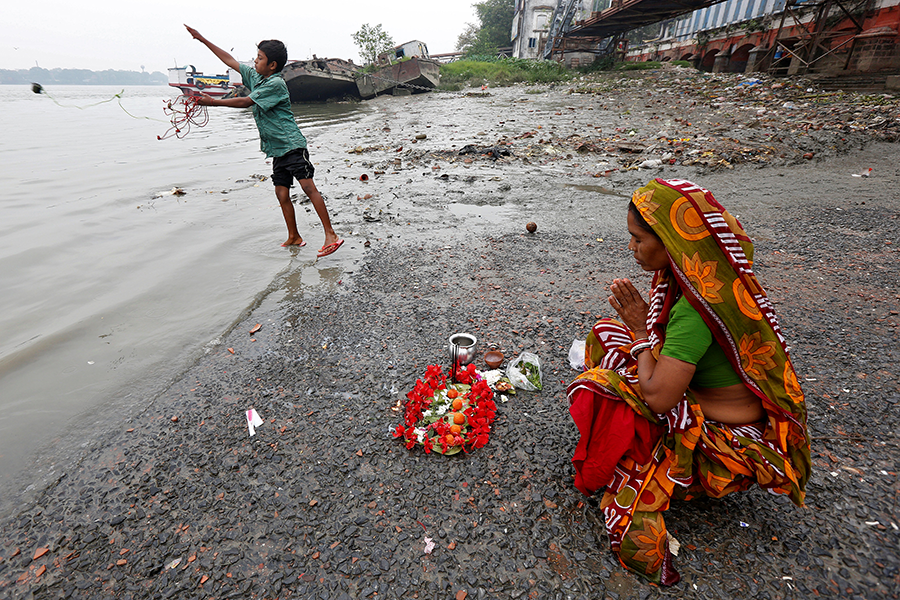Mother Ganges: Can human rights save India's sacred river?
Loading...
India’s sixteenth-century Mughal emperor, Akbar, described the Ganges River as “the water of immortality.” Generations of Indians before and since have revered it as Ma Ganga, or “Mother Ganges,” a divine gift. For Akbar, its water was good enough to serve at court.
But these days, India’s government sees a major problem with the sacred waters of the Ganges and other major waterways. More than a billion gallons of waste – from sewer drains, leather tanneries, squat toilets, and elsewhere – flows into the Ganges alone every day. Since taking office in 2014, Prime Minister Narendra Modi has made its cleanup a top priority.
And on Monday, the river gained a new protection: legal personhood. A court in the northern Indian state of Uttarakhand declared the Ganges and its main tributary, the Yamuna, to be “legal and living entities having the status of a legal person with all corresponding rights, duties and liabilities,” The Guardian reports. The court cited a similar decision made last week by New Zealand’s parliament, which conferred personhood on the Whanganui River, considered sacred by the native Maori people.
The ruling offers environmentalists another tool to protect these vital waterways, but they say that more still needs to be done to stop pollution and illegal dumping.
“All of this will become illegal with immediate effect,” Indian engineer and environmentalist Himanshu Thakkar told the Guardian, “but you can’t stop the discharge immediately. So how this decision pans out in terms of practical reality is very unclear.”
So far, Mr. Modi’s Namami Gange, or Obeisance to the Ganges, cleanup campaign has met mixed success. The country’s environment minister, Prakesh Javadekar, told the BBC’s Justin Rowlatt last May that industrial pollution had already fallen by a third, and that the first five years of the campaign would show “a marked difference.” But Mr. Rowlatt reported seeing plenty of pollution still flowing downstream during his investigation.
Mr. Thakkar faults the country’s government for not “looking at the governance of the river... You need a simple management system for each of the [sewage treatment] plants and give independent people the mandate to inspect them, question the officials and have them write daily and quarterly reports so that lessons are actually learned.”
It’s possible that legal personhood could help achieve this result. Per the Uttarakhand court’s decision, two state officials will represent the Ganges and Yamuna in legal disputes. They could find an ally in India’s top environmental court, the National Green Tribunal, which has been moving aggressively to force both polluters and government officials to clean up the river.
But even one of the court’s judges, Swatanter Kumar, hinted that the court can’t clean up India alone. “It is so frustrating that from morning till evening, everybody seems to be worsening the environment,” The Washington Post quoted him as saying. “As if they are all living in the sky and the rest of us are left to die on Earth.”
Cleaning up the Ganges could also require a change in cultural attitudes towards the river – which has long been believed, erroneously, to have self-purifying properties – and, of course, more money.
According to The New Yorker’s George Black, “restoring the Rhine, which is half the length, took almost three decades and cost forty-five billion dollars. The budget for Namami Gange is about three billion dollars over five years.” Even New Zealand’s declaration of the Whanganui as a person was accompanied by millions of dollars of environmental and legal aid.
The river’s ongoing challenges aren’t lost on environmental activist Vimlendu Jha. “Merely announcing that it is a living entity will not save the river,” he told the Associated Press. “The state government, officials and citizens need to act to clean up the river and stop further pollution.”








